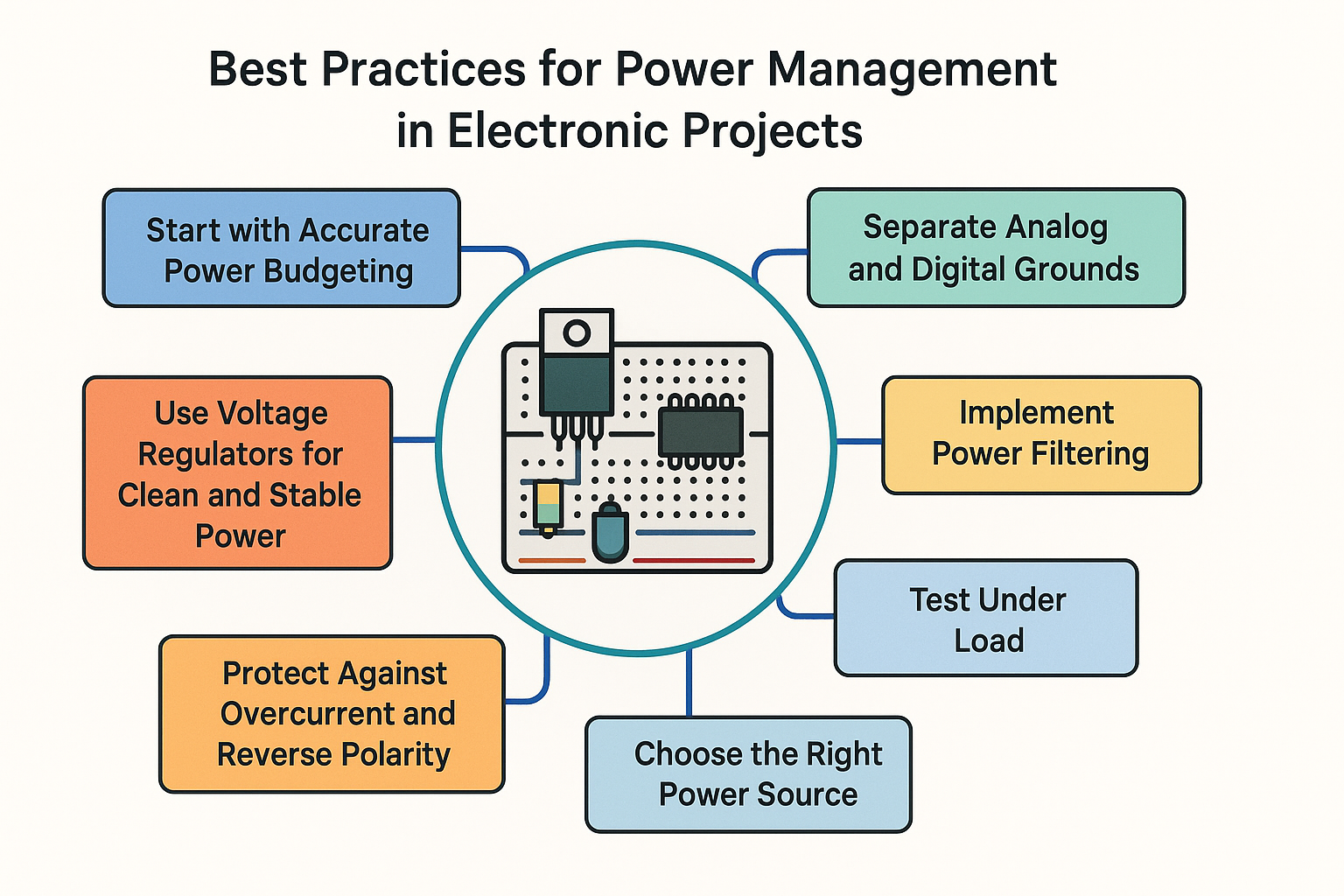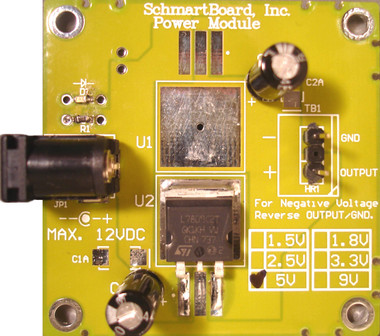 Loading... Please wait...
Loading... Please wait...Categories
Best Practices for Power Management in Electronic Projects
Posted on May 23rd 2025
Power management is a critical aspect of any electronic design. Whether you're building a simple sensor module or a complex IoT device, ensuring efficient, reliable, and safe power delivery can mean the difference between a successful prototype and a frustrating failure.
In this post, we’ll explore key power management best practices every electronics enthusiast or engineer should know—and how Schmartboard products can help make implementation easier and more effective.

1. Start with Accurate Power Budgeting
Before powering up your project, calculate the total current and voltage requirements of all your components. Factor in peak and idle loads, and always leave a margin for expansion or unexpected spikes.
Tip: Create a table of each module’s voltage and current needs. Add safety margins (~20%) to prevent under-powering critical components.
2. Use Voltage Regulators for Clean and Stable Power
Voltage regulators ensure your components receive consistent voltage despite fluctuations in your power source. They are essential when stepping down from sources like 12V or 9V to lower voltages (e.g., 5V or 3.3V).
Why Schmartboard?
Schmartboard’s voltage regulator prototyping boards make it easy to integrate surface mount regulators without the hassle of fine-pitch soldering. These boards allow quick testing and replacement, ideal for iterative design.

3. Separate Analog and Digital Grounds
Mixing analog and digital grounds can lead to noise interference and unstable behavior in sensitive analog circuits like sensors or amplifiers. Use star grounding or separate ground planes when possible.
Implementation Tip: Use Schmartboard’s prototyping boards with ground planes to design clear signal paths and minimize electrical noise in mixed-signal environments.
4. Implement Power Filtering
Even with good regulators, some noise can sneak in. Use capacitors near power pins to filter high-frequency noise and stabilize voltage levels.
-
Decoupling capacitors: Place 0.1µF ceramic capacitors close to each IC’s VCC pin.
-
Bulk capacitors: Use larger electrolytic caps (10µF–100µF) to smooth out power rails.
Schmartboard’s surface mount adapter boards let you easily prototype with both small and large capacitors—even if they’re surface-mount only.
5. Protect Against Overcurrent and Reverse Polarity
Mistakes happen. A reversed power cable or a short circuit can fry your entire board. Use fuses, diodes, or PTC resettable fuses to protect your components.
Pro Tip: Design your Schmartboard prototyping setup with inline Schottky diodes or PTCs for automatic protection. This simple step can save hours of rework.
6. Choose the Right Power Source
-
Battery-powered projects: Choose low-power components and use sleep modes.
-
USB-powered projects: Remember the 500mA limit (for USB 2.0).
-
Wall adapters: Ensure they provide regulated DC and don’t introduce ripple or noise.
If you're designing portable systems, Schmartboard’s compact layouts help you test with various power configurations—ideal for battery-powered wearables or handheld tools.
7. Test Under Load
Always test your power supply under the real load. A power source might look fine when idle but fail under full draw.
Suggestion: Build your test circuit on a Schmartboard prototyping board so you can easily swap out components and add measurement points with minimal soldering.
Final Thoughts
Power management may not be the most glamorous part of electronics design, but it’s arguably one of the most important. A well-powered circuit is stable, reliable, and efficient.
Why Schmartboard?
Schmartboard’s line of prototyping boards, adapter kits, and surface mount solutions simplify power routing, make soldering easier, and help you build smarter and safer. Whether you're a hobbyist or a professional engineer, integrating these power best practices with Schmartboard tools ensures your projects have a strong electrical foundation.
Ready to power up smarter?
Explore Schmartboard’s power-related prototyping boards and accessories and take control of your project's energy needs—one connection at a time.
Recent Posts
- » Do Inspect Solder Joints Under Magnification for Intermittent Issues
- » Don’t Assume Power Supplies Are Perfectly Clean
- » Do Choose the Right PCB Stack-Up Early to Support Signal Integrity
- » Do Route High-Frequency Signals with Controlled Impedance
- » Don’t Overcrowd the Board — Leave Room for Debugging
